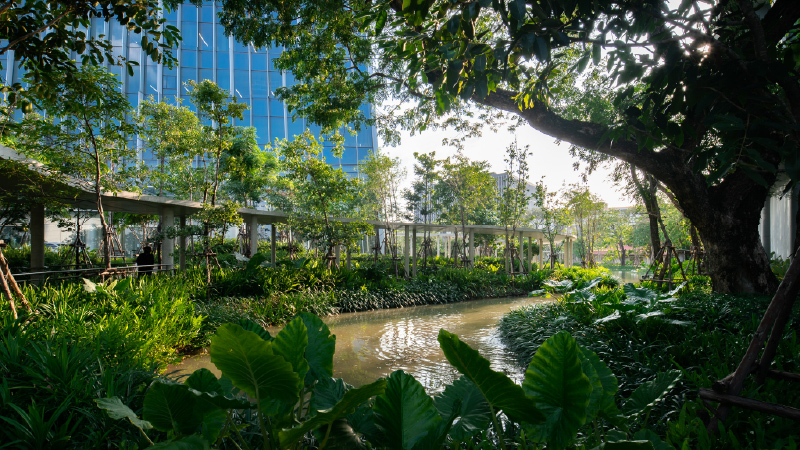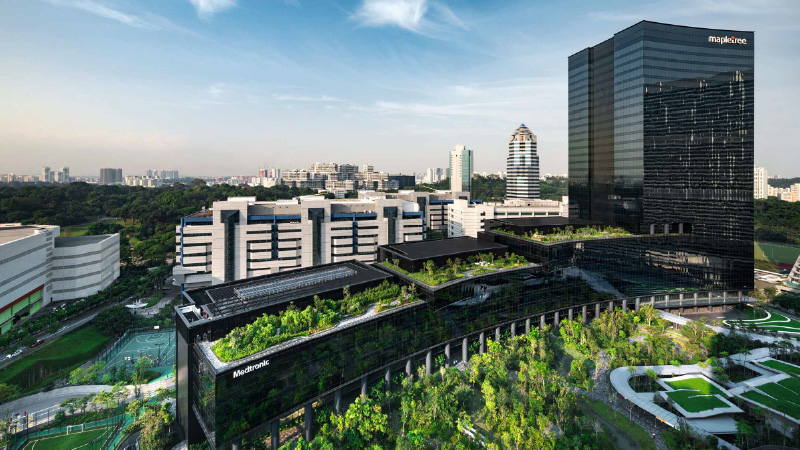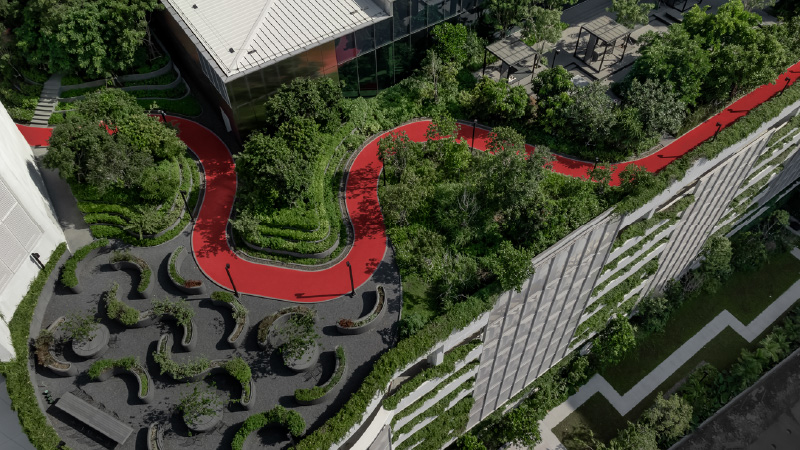Queen Sirikit National Convention Center (QSNCC)
Bangkok, Thailand
Weaving a Global Events Platform with Everyday Life
Facing Pune’s extreme climate of dryness and heavy monsoons, Lupin Research Park applies an adaptive landscape strategy that follows the
land’s natural flow. Stepped terrain and gentle slopes help manage water and support the ecosystem. The result is a resilient green campus
with a pleasant microclimate, where employees can connect with nature throughout the day.
Project Information ↘︎
Client & Developer
N.C.C. Management & Development Co., Ltd & Frasers Property (Thailand) Public Company Limited
Architect
Design 103 International Ltd.
Status
Completed
Landscape Area
17,000 sq.m.
Year
2022
Award
-
Design Director
Namchai Saensupha
Landscape Architect
Yoottapol Samhansook
Parittaporn Sirikojchakorn
Punmika Soodjairak
Construction Manager
Thitiwat Chintanavitch
Horticulturist
Tanee Sawasdee
Panita Onsaeng
Montakran Poonsang
Collaborator
Interior: ONION Co.,Ltd.
M&E: EEC Lincolne Scott Co.,Ltd.
C&S Engineering: Beca (Thailand) Company Limited
Graphic Designer: Vipulapas Puapolthep and
Siriava Thongtour
Photographer: Nawin Deangnul
The Queen Sirikit National Convention Center (QSNCC), Thailand’s first international convention center, has been an integral part of the nation’s story for over three decades. In 2019, the Center embarked on a major transformation, not only to modernize its facilities but to reimagine its role as a world-class event platform that is also a living part of the city.
The guiding philosophy of Preserve, Nurture, and Advance became the foundation of this vision, ensuring that while the Center looked toward the future, it would also carry forward the essence of its history and place.
New roadways eased traffic, while shaded walkways invited people to pass through and linger. In this way, QSNCC was shaped not as an isolated venue but as a connector—linking Benjakitti Forest Park with the surrounding office districts, and weaving itself into the everyday life of the city.
The expansion multiplied the site fivefold, spreading across more than 300,000 square meters. With such scale, circulation was the first challenge to resolve. The design integrated pedestrian paths, vehicular access, and open spaces into a cohesive whole. Walls and fences were lowered to dissolve barriers, making the grounds feel like an extension of the city.
Preserving nature was central to the design. Three great Rain Trees at the front of the site were carefully protected, their broad canopies continuing to welcome visitors. Six Burma Padauk along the northwest edge were also retained, standing as companions to Benjakitti Forest Park. Around them, new trees were planted to enrich the landscape, providing shade, comfort, and continuity between the Center and its natural setting.
At the heart of the entrance stands the Lokuttara sculpture by National Artist Professor Chalood Nimsamer, a piece that has long been associated with QSNCC. Once placed in a quiet and unused plaza, it now presides over a reimagined forecourt alive with movement. Twin fountains flank the sculpture, animating the space, while the plaza itself offers flexibility, at times serving as a stage for activity and a calm, open ground. Beyond it, a broad stairway doubles as amphitheater seating, inviting people to gather, to watch performances or to sit and enjoy the afternoon sun fading into evening light. Rows of flagpoles line both sides of the sculpture, standing ready to mark future international gatherings. To balance openness with security, layers of mid-height plantings soften the view and provide discreet screening, ensuring safety without sacrificing a sense of welcome.
Another key highlight of the landscape design, and now a new landmark of the city, is the Feature Stairs—a grand staircase connecting the main forecourt to the basement level. Beyond its impressive scale, the stair is distinguished by a crisscrossing pattern inspired by the traditional pha khao ma textile, translating an interior design motif into the landscape to create a cohesive design language.
With a depth of 6 meters, landings are placed every 3 meters for safety, while its 20-meter width ensures the stairs serve more than just a connective function. Additionally, they function as an emergency exit, providing a safe and efficient evacuation route.
On either side, planted green slopes soften its mass and extend the presence of nature into the heart of the plaza. Overhead, the preserved rain trees and newly planted canopies provide shade, transforming the stair into more than a passageway: it has become a shaded gathering place and a new meeting point for the city.
On either side, planted green slopes soften its mass and extend the presence of nature into the heart of the plaza. Overhead, the preserved rain trees and newly planted canopies provide shade, transforming the stair into more than a passageway: it has become a shaded gathering place and a new meeting point for the city.



